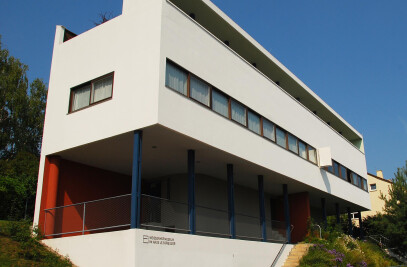Saarinen's original design featured a prominent wing-shaped thin shell roofover the headhouse (or main terminal); unusual tube-shaped departure-arrival corridors, originally wrapped in red carpet; and tall windows enabling expansive views departing and arriving jets. The concrete shell, which inspired Saarinen to develop curved-edge ceramic tiles conforming to the curvilinear shapes. The design straddles Futurism, Googie and Fantastic architecture. The terminal was one of the first with enclosed passenger jetways, closed circuit television, a central public address system, baggage carousels, electronic schedule board and baggage scales, and the satellite clustering of gates away from the main terminal. Food and beverage services included the Constellation Club, Lisbon Lounge, and Paris Café. However, as with many terminals designed before the advent of jumbo jets, increased passenger traffic and security issues, the design proved difficult to update as air travel evolved; terminal gates close to the street made centralized ticketing and security checkpoints difficult. JFK was unusual in having company-owned and designed terminals. Terminals were built by Eastern Airlines and American Airlines while others carried the names of their airlines, including the Worldport of Pan American World Airways and the Sundrome of National Airlines.
Source: Wikipedia.org

































